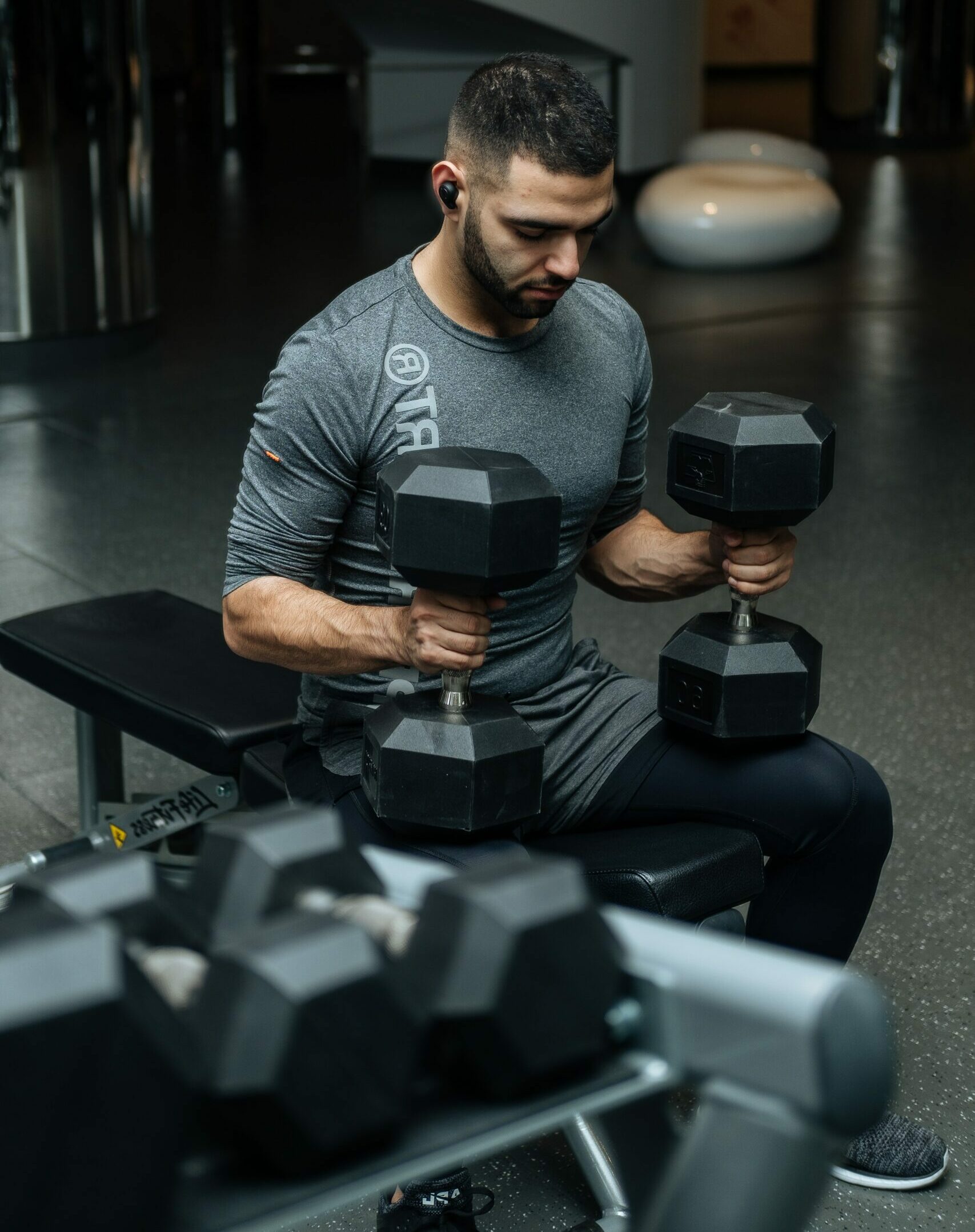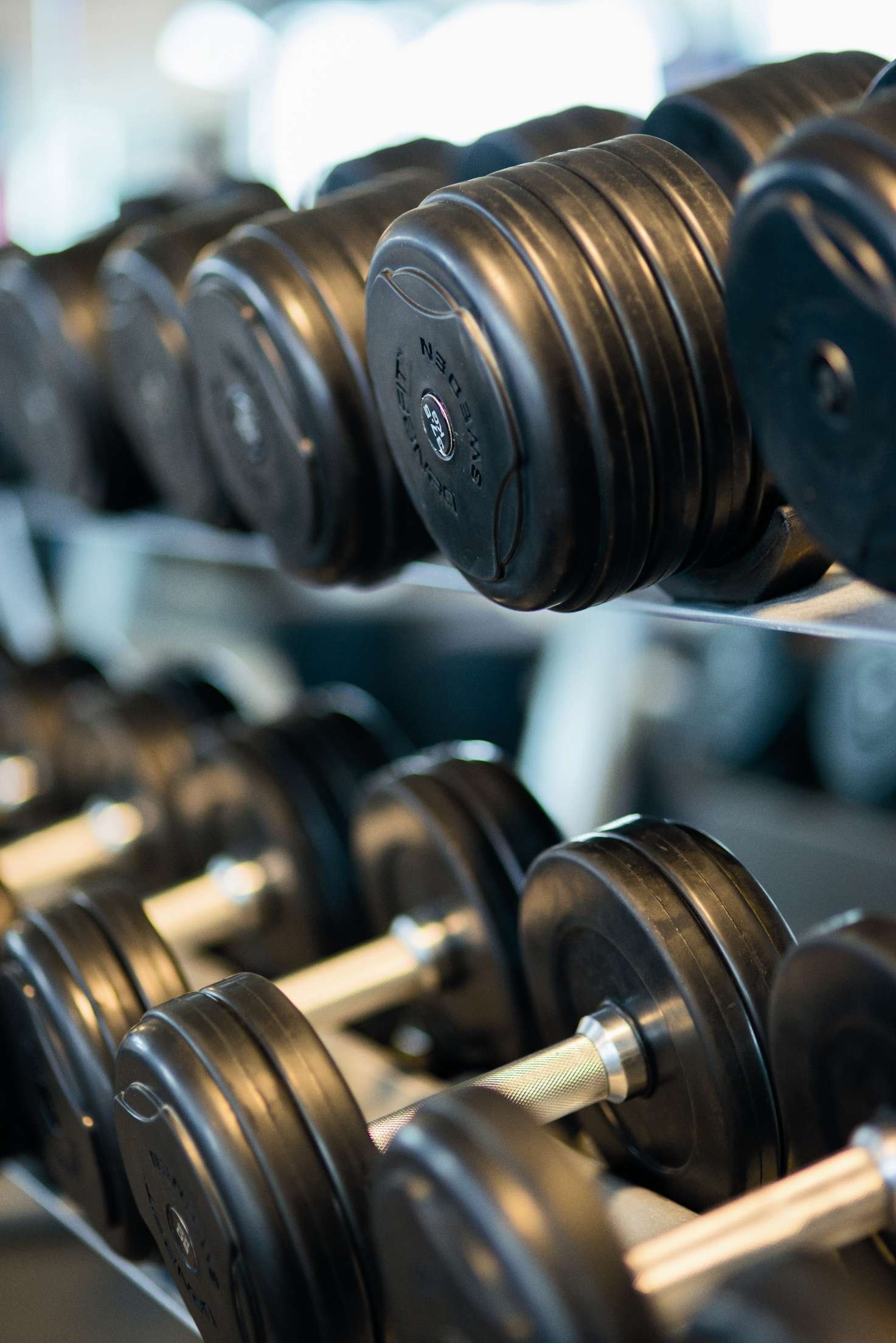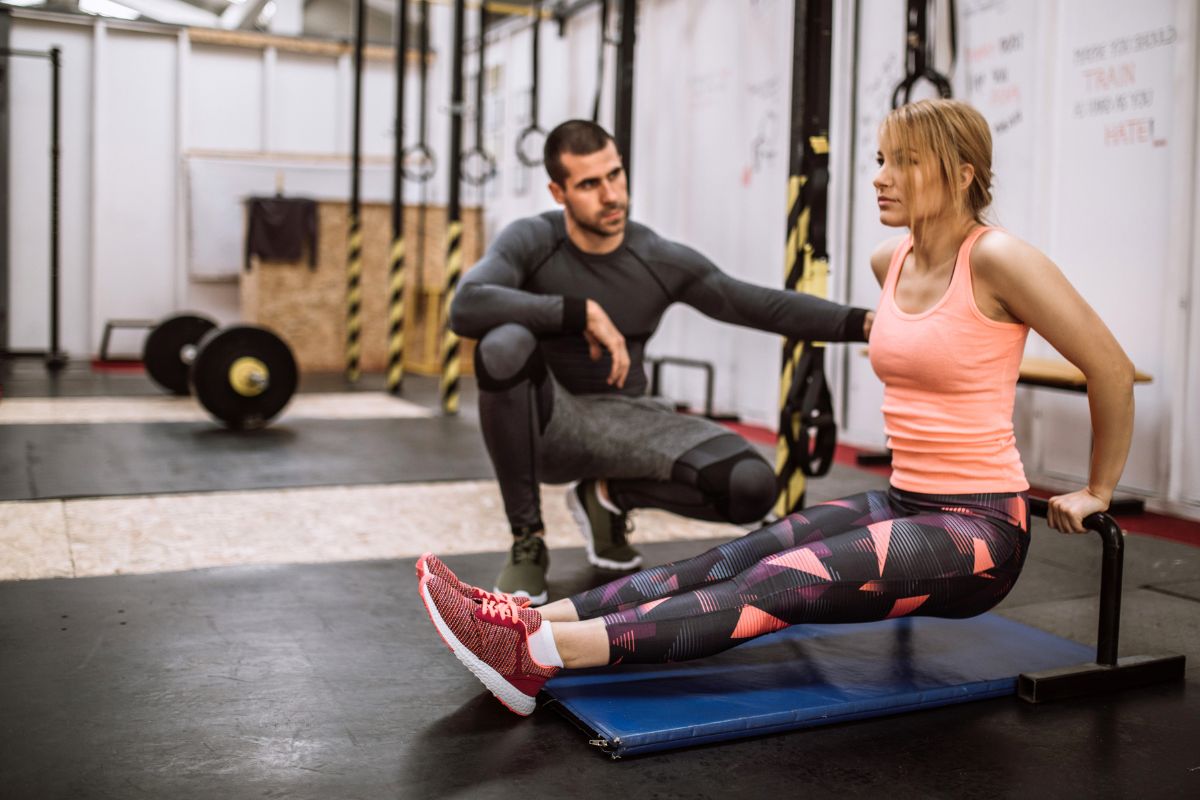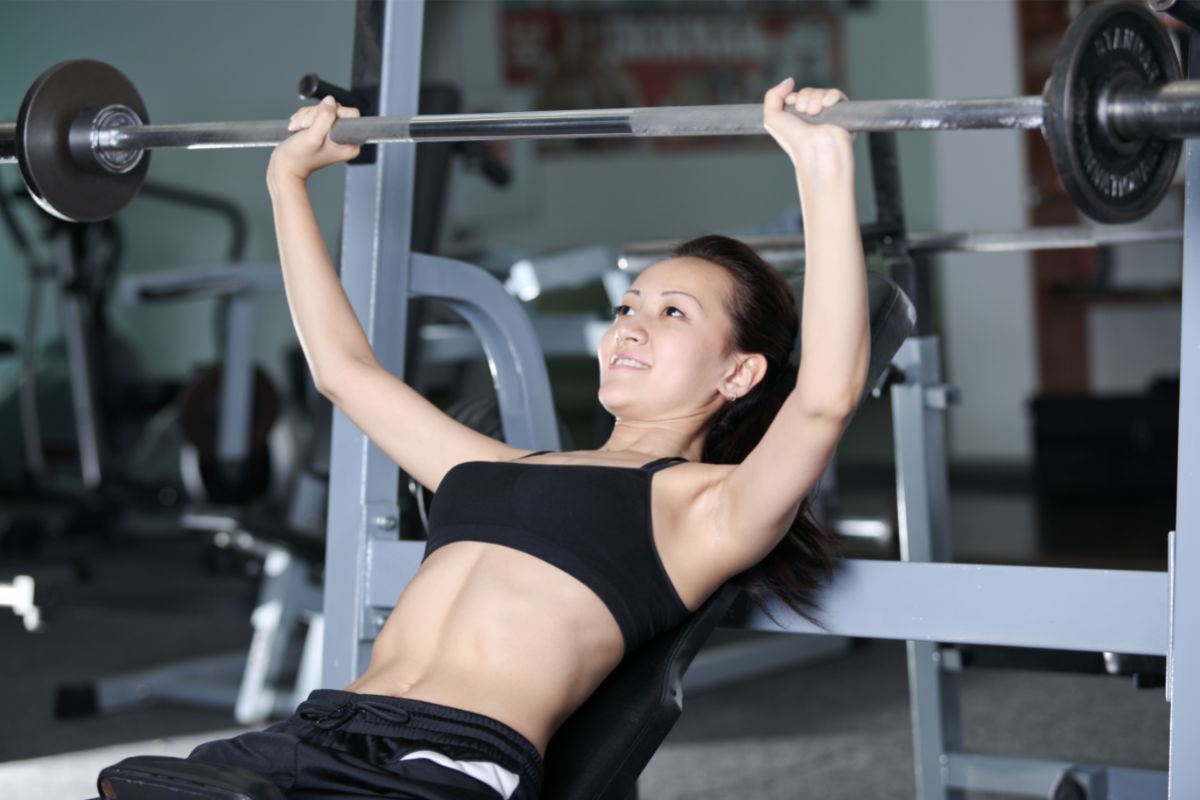Last Updated on November 20, 2022 by TJ Daniels, Certified Personal Trainer


Let’s face it, friends. Although few will admit it, mainly because we can’t see them in the mirror, most of us have underdeveloped rear deltoid muscles compared to the rest of our shoulders.
It is easy for us to be consumed with shoulder exercises that will build the most muscle mass and upper body strength and these are usually the exercises we look forward to the most when preparing for our exercise session.
I can recall many times when I pulled into the parking lot of my local gym ecstatic that my daily routine was upper body or included a few sets to failure of pull-ups.
I was even pretty happy when the routine included upper back or upper arm exercises as I knew that would help with my “tank top” look.
But I honestly don’t remember when I had this type of feeling when I knew my workout for the day was rear delt rows followed by some type of lateral raises.


However, without fully developed rear delts, it is impossible to get the symmetrically balanced cannonballs we are all looking for!
Attacking your shoulders with a “balanced” mindset will also increase your strength in your entire muscle region, leading to fewer injuries in this area.
We need to start looking at the deltoid muscle and rear deltoid exercises as we would any upper body exercise and make sure we are including them in our regime.
Thankfully, in this article, we are going to share with you some great ways to attack those rear deltoids beyond your typical pulling movements, the lateral raise, or pull ups.
.

What Are The Rear Delts?
Your shoulder muscle has three separate heads: the front, middle, and back, with the back portion also known as the posterior deltoid.
The posterior delt is usually disproportionately underdeveloped compared to the front and middle heads due to many traditional and favored exercises, like the bench press and other pressing movements.
And although these are great exercises, they all target and build the anterior head and the lateral head but they don’t do much for the posterior deltoid region.
As well, many other favored shoulder workouts, like the overhead press and front and side raises, do a fantastic job of building your front and middle shoulder muscles but not the back of the shoulder.
There are a ton of exercises beyond these, like pull-ups, pulling exercises such as rows, and even workouts with a resistance band that many assume will be comprehensive shoulder training.
However, even though each of these is a great exercise, they often will not assist with rear delt development.
And besides having disproportionate shoulders, weak posterior deltoids can lead to bad posture and the shoulders-slumped-forward look that we’re all too familiar with.


Why Is It Hard to Work the Rear Delts?
As I mentioned earlier, frankly, one of the main reasons is that you cannot flex them in a mirror and see what you need to work on.
Also, without intention, it is difficult to prevent your other, stronger muscle groups, like your traps and lats, from getting engaged and stealing what would otherwise have been distributed to your rear delts.
The biggest difference with the exercises we will cover is that they minimize the involvement of the other muscle groups and put the emphasis where we need it. On the rear deltoids!
In this article, we are going to give you the best exercises to really focus on your posterior delts to allow you to build symmetrical and properly developed shoulder muscles.


What Are the Best Rear Deltoid Exercises?
Incline Dumbbell High Row
One of the best dumbbell rear delt exercises to promote muscle growth is the incline dumbbell high row.
To prepare for this exercise, follow the following steps:
- Set up a bench at a 30-degree incline and lay flat down on the bench, stomach first (prone position).
- Grab two dumbbells and allow your arms to hang straight down off the sides of the bench.
- With your arms fully extended, pull the dumbbells up in a row fashion. Make sure to keep your elbows out as wide as you can.
- When raising the dumbbells, you also want to ensure you are pulling them up higher towards your chest rather than lower.
- Bring them up as high as you can and try to squeeze your shoulder blades at the top, pulling your widened elbows up one more notch higher, as this is when you are really going to feel the rear delts work.
- Slowly lower the dumbbells back down to the starting position and repeat for 10-15 reps.


Bent-Over Cable Reverse Fly
Another great rear delt exercise for muscle growth is the bent-over cable reverse fly.
When most people do bent-over reverse flies, they use dumbbells. However, using cables is actually more effective for the rear delts and there are a number of cable rear delt exercises that you can do!
The reason cables are so effective is due to the fact that you can cross your arms all the way over while maintaining tension on the back of your shoulders which gives you a better range of motion activating more of the rear deltoid area.
Follow these steps for the bent-over cable reverse fly:
- To begin, slowly lower the pulleys to the bottom of the cable and bend over about 45 degrees.
- Place your feet hip-width apart or shoulder-width apart, whichever feels best.
- Cross your arms and grab one cable pulley in each hand. Again, grab the left cable with your right hand and the right cable with your left hand.
- From this position, pull your arms up and out, allowing your elbows to lead the movement and not your hands.
- Remember to target your full range of motion, bringing your elbows up as high as you can and squeezing at the top.
- After holding for a second, lower the cables back down slowly until your arms are fully extended, returning to your starting position.
- Repeat for 10-15 reps.


Reverse Pec Deck Machine | Reverse Fly
Another exercise that is awesome at targeting your rear delts is one that you might be more familiar with, and it is the reverse pec deck machine.
This exercise does a fantastic job of isolating your rear delt muscle and should be a staple in your shoulder training.
Assuming you have one of these in your local gym, make sure you are working it into your routine to develop balanced shoulders.
Follow these steps for the perfect reps to target those rear deltoids:
- Start by adjusting the seat and setting it at the proper height so that your shoulders are even with the handles.
- Next, you want to adjust the handles so they are straight out in front of you, which is usually the last notch on most machines.
- While sitting, facing the machine, with your chest flat against the pad, grab the handles with your palms facing inward and perform a reverse fly.
- When performing the fly, bring your arms back in an arc and really squeeze at the top of the move to get that extra rear deltoid work.
- After holding for a second or two, slowly bring your hands back to their starting position.
- Repeat for 10-15 reps.
Seated Bent Over Dumbbell Raises


Another great move to build your rear delts is the seated bent-over dumbbell raises.
Many people do this exercise standing, which is a great upper body and upper back workout, to isolate the rear delts you should do them seated.
This will take the momentum out of the movement and focus more on igniting the back of your shoulders.
Follow these 7 steps:
- To start, grab a bench and two dumbbells off of the lighter side of the rack.
- Take a seat on the bench and grab the dumbbells with your hands in a neutral position.
- Lean your upper body forward until it is just higher than parallel to the floor.
- Next, from this bent-over position, perform a reverse fly by raising the dumbbells out to your sides in an arc-like motion leading with your elbows.
- Make sure your hands stay on your arc and are lifted out by your sides and not pulled or rowed into your body.
- Keep a slight bend in your elbows and squeeze your shoulder blades at the top of the exercise. This will really engage your posterior deltoids.
- Slowly lower the dumbbells back down to the starting position.
- Repeat for 10-15 repetitions.
Standing Barbell High Row


A ‘cousin’ to the incline dumbbell high row is the standing barbell high row which also does a fabulous job at targeting your rear delts when performed correctly.
However, the reason why you want to ensure this exercise is part of your routine in addition to the incline dumbbell high row and most other rear delt exercises is because you can use much heavier weights here to counter-balance your lower-weight exercises.
And we need a good balance of both heavy and light weights for true shoulder growth and ignoring your rear deltoids is a mistake too often made!
To perform this rear deltoid exercise:
- Place your feet hip-width apart or shoulder-width apart if that feels more comfortable.
- Grab a barbell with as wide of a grip as you are comfortable with your palms facing down.
- Next, place your body in position as if you were doing a normal barbell row by slightly bending at the knees and hinging at the hips until your back is just short of parallel to the ground.
- Now, lift the weight up towards your upper chest with your elbows kept high, focusing on pulling the elbows up and back behind your body as much as possible.
- Your check at your top position should be that your elbows are at a 90-degree angle to ensure your focus is on your rear delts.
- Hold this position for a few seconds, squeezing your shoulder blades, and then lower the weight back down to your starting position slowly, ensuring you are keeping your core tight and not swaying with your body.
- Repeat for 10-15 reps.


Final Thoughts
As with other targeted muscle exercises, be sure you are rotating your exercises and not overworking a particular area. For example, you would not want to do all of these exercises on the same day but instead, work one or two into your routine alongside your other shoulder work.
You need to always be cautious to not put too much strain on your rotator cuff muscles and shoulder joints and put yourself at risk for injury.
Also, if you already have obviously disproportionately larger front delts (you know you who are), it is important that you’re not isolating them with exercises like frontal raises or Arnold presses, or else they’ll continue to grow out of proportion and it will be difficult to ever catch up with your rear delts.
Growing balanced shoulders takes a lit bit of effort and thought.
However, in order to target your rear delts properly, you need to make sure you are truly doing rear delt training and not mistakenly doing other upper back exercises or anterior deltoid exercises that you mistakenly also believe are rear deltoid workouts.
I really hope this article has helped you out and has put you on your way to great, balanced shoulders!
- How To Start HIIT Workouts [Beginner’s Guide] - May 18, 2023
- How To Sneak A Workout In While Taking Care Of Your Baby - March 17, 2023
- How To Build Your Chest With Dumbbells [Guide] - February 9, 2023








